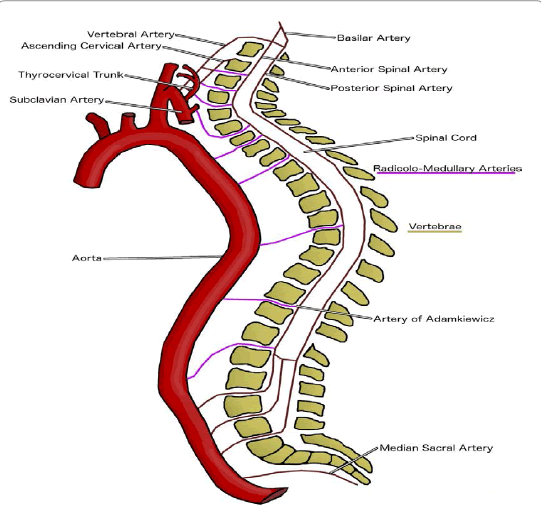| Note: The spinal cord predominantly receives blood from three arteries
originating around the cervical-cranial junction. These arteries run
longitudinally along the spinal cord, terminating at the caudal end. These
three arteries, the anterior spinal artery and paired posterior spinal
arteries, receive their blood supply mainly from the vertebral arteries, as
well as the ascending cervical arteries, branches of the thyrocervical trunk.
The thyrocervical trunk additionally supplies the cervical spinal cord via
numerous anterior and posterior radiculomedullary arteries. These arteries
do not anastomose with the spinal arteries (anterior and posterior); rather,
they directly supply the spinal cord at the level they enter the vertebral canal.
As the spinal cord extends caudally, blood supply becomes scarce. Anterior
and posterior radiculomedullary branches from the thoracic and abdominal
aorta continue to supply the spinal cord directly, but the spinal arteries do
not receive any new anastomoses until the artery of Adamkiewicz at the
level of the lower thoracic or lumbar vertebra. The lumbar and sacral spinal
cord additionally receives blood from the median sacral artery anteriorly.
Magenta lines represent radiculomedullary arteries and yellow boxes
represent vertebrae. |

